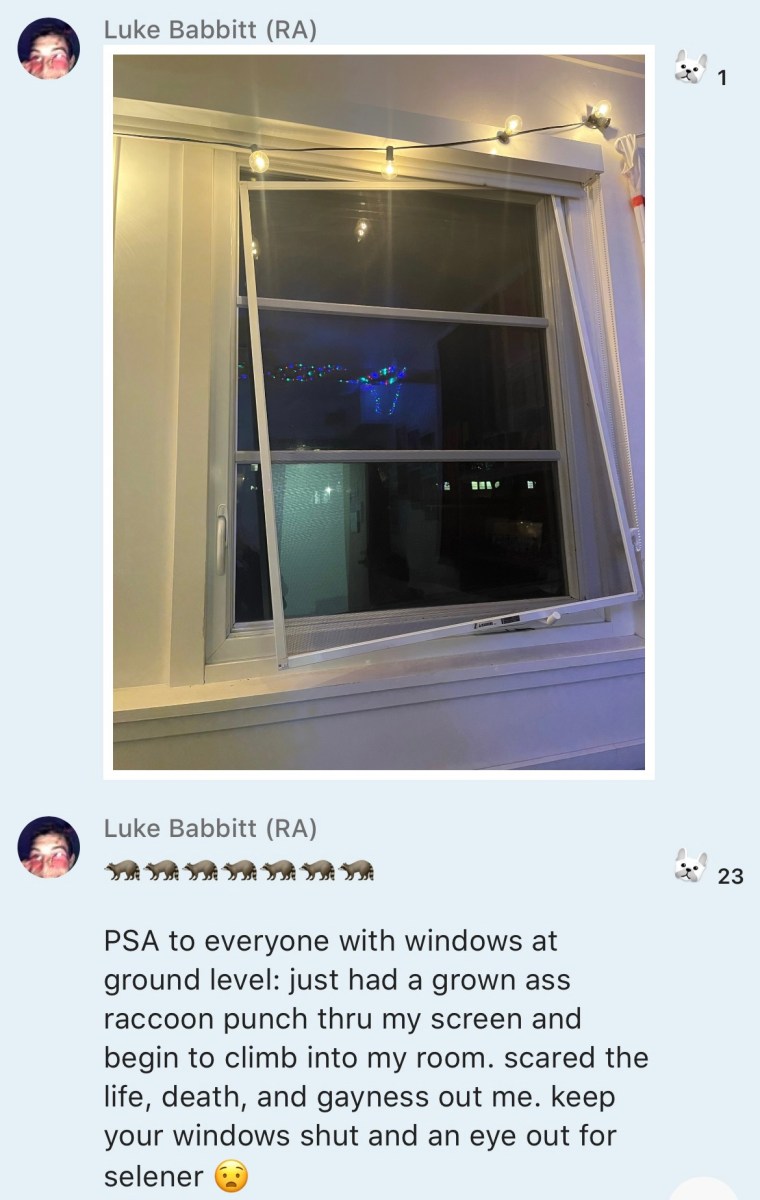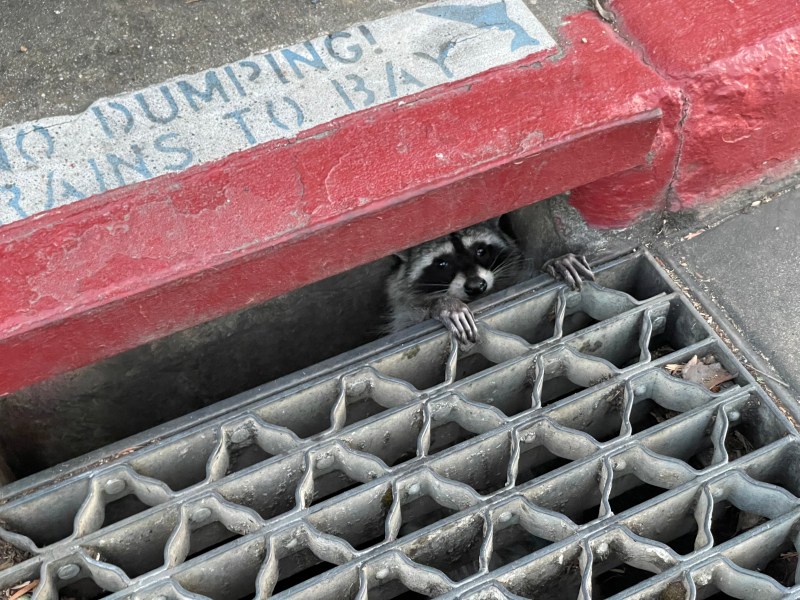During my sophomore year, I wearily returned to Toyon Hall at about midnight, ready to hit the sack. The air was crisp, and the friendly neighborhood skunk calmly traipsed across the front lawn. All was well until the said skunk suddenly started barreling towards the courtyard where I was walking. Fearing a pungent attack, I scrambled through the front doors. Reflecting on the incident two years later, I had a hunch that such unprovoked encounters are not uncommon.
From the hares that hop along bike paths to the coyotes roaming East Campus, animals at Stanford cannot go unnoticed. After sunset, we may observe packs of husky raccoons traversing Meyer Green. “I saw [a raccoon] slither down into the sewer,” said Catherine Chen ’22.
The critters also have a propensity for loitering around manholes and trash cans. Jodalys Herrera ’23 suspects the Stanford raccoon’s “chunky” build is attributed to feasting at gourmet dining hall dumpsters. She saw one hefty critter “eating from a pile of something by a trash can.”
Unfortunately for Luke Babbitt ’23, one such raccoon trespassed into his dorm room. On Jan. 30, as he lay in bed with the windows open, he heard a menacing cracking sound. The window screen popped off the frame and a raccoon paw came in, pulling a crawling creature through the crevice. Panicking, Babbitt started making his escape, but then decided to defend his home turf, going from “a moment of flight to a moment of fight.” Swinging his pillow at the window, he managed to shoo away the invader. Reflecting on the surreal encounter, Babbitt said the interloping raccoon “scared the life, death and gayness out of [him].”

Janine Fleming ’22 also had a wild run-in near Kimball Hall during her sophomore year. As she was receiving a DoorDash order, she was soon joined by what seemed to be a large dog, with which she had a brief, “awkward stare-off,” before the animal bolted away. Much to her alarm, she soon realized that the dog had been a coyote.
The prevalence of coyotes near Hannah Pingol’s ’22 sophomore year dorm made her opt to skip class on occasion. At a tranquil wine-and-cheese event hosted by Kairos in 2020, Pingol and a friend stepped out to get a breath of fresh air. After discerning the gaze of a coyote, they began running. To their dismay, the coyote initially followed in hot pursuit. “We were so scared we threw our drinks into the bushes,” said Pingol.
The subject of hares is all too personal for Henry Liera ’22, who witnessed a hare couple copulating outside of the Arrillaga Outdoor Education and Recreation Center. “I was shocked; I laughed, said ‘good for them’ and then went on with my day,” said Liera.
During my freshman year, I heard a rumor that the critters’ seemingly larger size is due to genetic mutations caused by Stanford radiation experiments gone awry. Doubting the veracity of this gossip, I contacted Stanford’s attending veterinarian and professor of comparative medicine, Stephen Felt.
Felt shared that people may perceive the size of jackrabbits, or hares, to be surprising given “how much bigger they are than their ‘smaller’ related cousins (i.e. rabbits), especially their ears and hindlegs.” Other wild mammals may appear larger when humans approach. Animals “getting stress[ed] can manifest by postural changes and sticking out their fur (term called ‘piloerection’),” Felt wrote.
According to Felt, all of these animals are typically nocturnal. If you see a raccoon in broad daylight, it may be a mother, “whose caloric needs are higher, [searching for food] so she can produce milk,” or a youngster that has been evicted from the nest, Felt wrote. However, Felt also disclosed that if the animals are out during daytime and “displaying unusual behaviors (stumbling, aggression, vocalizing, seizures, etc.) they may have a disease (e.g., rabies)” for which Animal Control should be contacted.
Although many Stanford mammal populations appear to be alive and thriving, others are suffering the effects of biomagnification, or the increased concentration of toxins in animals higher up the food chain. “We have certainly identified dead predator wildlife species (fox, bobcat) that have been spillover victims of indiscriminate rodenticide usage,” Felt wrote.
“The most massive animal of them all is the human,” said Lina Fowler ’22 M.S. ’23, who is unfazed by the campus’s furry residents. In stark contrast, Babbitt remains vigilant of his surroundings. “I keep my windows closed at night because I’m scared,” he said.
